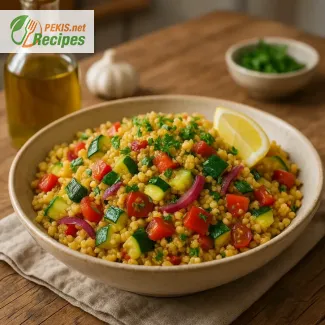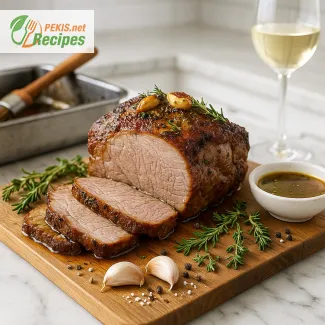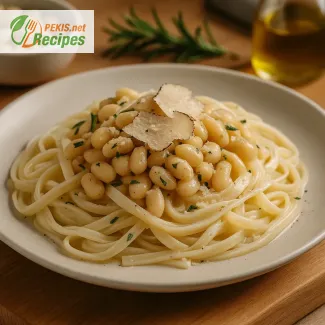
The Ultimate Guide to Crafting the Perfect Greek Gyro at Home
Discover the Rich Tradition of Greek Gyros
There's something undeniably irresistible about a well-made Greek gyro—the juicy, seasoned meat, the warm, fluffy pita bread, and the creamy, tangy tzatziki sauce, all wrapped together in a perfectly balanced handheld delight. Whether you've savored this iconic dish in a bustling Athens taverna or are simply intrigued by its authentic Mediterranean flavors, mastering the art of homemade gyros is easier than you might think.
Gyros have been a staple of Greek cuisine for centuries, with their roots tracing back to the Ottoman Empire. Inspired by the traditional Middle Eastern doner kebab and shawarma, the Greek gyro has evolved into a dish with distinct flavors and textures, offering a unique culinary experience that has gained popularity worldwide.
What Makes an Authentic Greek Gyro?
A true Greek gyro isn’t just about the meat—it’s about how all the ingredients come together in harmony. From the carefully seasoned lamb, beef, or chicken, to the pillowy soft pita, and the zesty tzatziki sauce, each element plays a vital role in creating a gyro that bursts with authentic Greek flavors.
The Perfectly Seasoned Meat
Traditional gyro meat is made from thinly sliced lamb, beef, or chicken, marinated in a blend of Mediterranean herbs and spices. Ingredients like oregano, garlic, onion, paprika, and cumin give the meat its signature depth of flavor, while a splash of lemon juice and olive oil ensures tenderness. Slowly roasted on a vertical rotisserie, the meat develops a beautifully crisp exterior while remaining juicy and flavorful inside.
The Soft and Fluffy Pita Bread
The pita bread used in gyros isn’t just a simple flatbread—it’s thicker, softer, and slightly chewy, perfect for wrapping around the succulent meat and toppings. Lightly grilled and brushed with olive oil, it adds a subtle warmth and richness to every bite.
The Creamy and Refreshing Tzatziki Sauce
No Greek gyro is complete without tzatziki, the creamy, garlicky yogurt-based sauce that brings freshness and balance to the dish. Made with Greek yogurt, cucumber, garlic, lemon juice, and dill, tzatziki provides a cool contrast to the warm, spiced meat, enhancing every bite with a burst of flavor.
Why Make Greek Gyros at Home?
While ordering takeout gyros may seem like the easier option, there’s something truly rewarding about making them from scratch. Not only can you control the ingredients to ensure maximum freshness and quality, but you also get to experience the joy of creating an authentic dish right in your own kitchen.
Fresh and High-Quality Ingredients
When making homemade gyros, you have the freedom to choose the best ingredients—from premium cuts of meat to fresh herbs and spices—ensuring that your gyros taste as authentic and delicious as those found in Greece.
Customization to Your Taste
One of the best parts about crafting gyros at home is the flexibility to customize them to your liking. Whether you prefer lamb, beef, or chicken, want to adjust the seasoning, or experiment with different toppings, you can create a version of gyros that’s uniquely yours.
A Fun and Engaging Cooking Experience
Preparing Greek gyros isn’t just about the end result—it’s about enjoying the process. From marinating the meat to assembling the final wrap, making gyros at home is a fun, hands-on experience that’s perfect for family meals, dinner parties, or casual weeknight cooking.
The Key to Achieving Restaurant-Quality Gyros
To truly capture the authentic taste of a Greek gyro, there are a few key techniques to keep in mind:
1. Marinate the Meat for Maximum Flavor
Letting the meat soak in a blend of spices, garlic, and olive oil for at least a few hours (or overnight) enhances its richness and depth, ensuring that every bite is bursting with Mediterranean flavors.
2. Use the Right Cooking Method
While traditional gyros are cooked on a vertical rotisserie, you can still achieve a similar texture at home by roasting the meat in the oven, grilling, or pan-searing. The goal is to develop a crispy, golden-brown exterior while keeping the inside tender and juicy.
3. Warm the Pita for the Best Texture
Lightly warming or grilling the pita bread before assembling the gyro enhances its softness and elasticity, making it easier to wrap around the filling without breaking.
4. Balance the Flavors with Toppings
From fresh tomatoes and red onions to crumbled feta and crispy fries, the toppings you choose can elevate your gyro and add extra layers of flavor and texture.
A Dish That Brings People Together
Few dishes are as satisfying and universally loved as the Greek gyro. Whether enjoyed as a quick street food snack or a homemade feast, gyros have a unique way of bringing people together. Their bold flavors, vibrant textures, and comforting warmth make them a favorite for any occasion.
By mastering this timeless Greek classic, you’re not just learning a recipe—you’re embracing a culinary tradition that has stood the test of time. So why not bring a taste of Greece into your kitchen today?
- Prepare the gyro meat:
- Preheat the oven to 180°C (350°F).
- In a large bowl, combine the ground lamb, ground beef, onion, garlic, oregano, cumin, coriander, paprika, salt, black pepper, and olive oil. Mix thoroughly until all ingredients are well incorporated.
- Transfer the mixture to a food processor and pulse until it forms a smooth paste-like consistency.
- Press the meat mixture into a loaf pan, ensuring it is compact.
- Bake for 45 minutes, or until the internal temperature reaches 75°C (167°F).
- Let the meat rest for 10 minutes before slicing thinly.
- Prepare the tzatziki sauce:
- Grate the cucumber and squeeze out excess liquid.
- In a bowl, combine Greek yogurt, grated cucumber, lemon juice, olive oil, minced garlic, chopped dill, salt, and black pepper. Stir well and refrigerate until ready to use.
- Assemble the gyros:
- Warm the pita breads in a dry pan for 30 seconds per side.
- Place a generous amount of sliced gyro meat in the center of each pita.
- Top with red onion, tomato slices, feta cheese, and parsley.
- Drizzle with tzatziki sauce and add French fries if desired.
- Fold the pita into a wrap and serve immediately.
Elevating the Classic Greek Gyro: Tips for a Superior Homemade Experience
Enhancing Flavor with Ingredient Adjustments
A Greek gyro is already a masterpiece of Mediterranean cuisine, but a few tweaks can elevate the flavors and make it even more delicious, aromatic, and well-balanced. Whether you're looking to add depth to the meat, intensify the freshness of the toppings, or create a lighter version, small adjustments can make a big difference.
Experimenting with the Meat Blend
Traditional gyro meat is made from a combination of lamb and beef, but different ratios can significantly alter texture and taste.
- For a richer, juicier texture: Increase the lamb-to-beef ratio. Lamb has a higher fat content, which results in tender and more flavorful slices.
- For a leaner option: Use only beef or mix in ground turkey or chicken. This creates a lighter yet still protein-packed option with slightly less richness.
- For a deeper umami taste: Marinate the meat overnight with red wine vinegar and a touch of Worcestershire sauce. This will enhance the complexity and depth of the spices.
Elevating the Marinade for Maximum Flavor
A good marinade is essential to develop bold flavors in gyro meat. While the classic mixture of oregano, garlic, cumin, and paprika is the foundation, adding a few more ingredients can intensify the taste:
- Smoked paprika enhances the meat with a subtle smokiness.
- Fresh lemon zest adds a bright, citrusy note that balances the richness of the lamb.
- A dash of cinnamon creates a hint of warmth and depth, mimicking traditional Greek spice blends.
- Greek red wine in the marinade brings a mellow sweetness and complexity, making the final dish even more aromatic.
Why Homemade Gyros Are Superior to Takeout
While restaurant gyros are convenient, making them at home offers distinct advantages in terms of flavor, quality, and nutrition.
Fresher, Higher-Quality Ingredients
When you make gyros from scratch, you have complete control over ingredient selection. Many takeout versions use processed meats or lower-quality oils, whereas homemade gyros allow you to choose fresh, organic cuts and high-quality extra virgin olive oil for an authentic Mediterranean taste.
Healthier and More Balanced
Many restaurant gyros contain excessive sodium, saturated fats, and preservatives. By making them at home, you can:
- Control salt levels to avoid overly salty meat.
- Use Greek yogurt-based tzatziki instead of heavy, oil-based dressings.
- Opt for whole wheat or gluten-free pita for a fiber-rich and gut-friendly alternative.
- Bake instead of fry the meat, achieving the same crispy edges with a healthier cooking method.
Customization for Dietary Needs
Making homemade gyros allows you to tailor ingredients based on preferences or dietary restrictions:
- Dairy-free tzatziki: Swap Greek yogurt for coconut yogurt and adjust seasoning to maintain a creamy yet tangy balance.
- Vegan gyro alternative: Replace the meat with spiced roasted chickpeas, jackfruit, or grilled mushrooms while keeping the traditional gyro spices intact.
Common Mistakes and How to Avoid Them
Even the most experienced home cooks can encounter challenges when making gyros. Here are some common mistakes and how to fix them:
Overworking the Meat Mixture
Many assume that mixing the meat too much will result in a better consistency, but overworking it can make it dense and tough. Instead, gently combine ingredients until just incorporated to keep the texture tender and juicy.
Skipping the Resting Time
After cooking, the meat should rest for at least 10 minutes before slicing. Cutting too soon releases juices, making the meat dry instead of moist and flavorful.
Using Cold Pita Bread
A cold or dry pita can ruin the experience of a perfect gyro. Always warm the pita slightly in a pan, oven, or grill for a soft, pliable texture that holds the filling without breaking.
Overloading the Wrap
While it’s tempting to stuff the gyro with extra toppings, too much filling makes it difficult to eat and can cause the pita to tear. Keep ingredients balanced for the best bite-to-texture ratio.
Healthier Alternatives Without Losing Flavor
For those looking to lighten up their gyros while maintaining bold, rich flavors, here are a few smart swaps:
Leaner Meat Choices
Instead of lamb or beef, try using chicken breast or ground turkey seasoned with the same Mediterranean spice blend. This reduces saturated fat while keeping the aromatic, herby flavor profile.
Low-Carb and Gluten-Free Options
If you’re avoiding gluten, replace traditional pita bread with:
- Lettuce wraps for a low-carb alternative.
- Homemade chickpea flatbread for a high-protein, fiber-rich substitute.
- Grilled eggplant slices as a unique base for a Mediterranean-inspired gyro bowl.
Lighter Tzatziki Sauce
Traditional tzatziki sauce is already healthier than most dressings, but for a lighter version:
- Use low-fat Greek yogurt instead of full-fat.
- Add extra cucumber to increase freshness while reducing calories.
- Skip the olive oil if you prefer a lower-fat option.
Final Touches to Make Your Gyros Exceptional
If you want to take your gyros to the next level, consider these finishing touches:
Fresh Herbs for an Authentic Touch
Adding a sprinkle of fresh dill, mint, or oregano enhances the authentic Greek aroma and complements the tzatziki sauce beautifully.
A Hint of Smokiness
For a more authentic grilled flavor, lightly char the gyro meat in a hot cast-iron skillet after baking. This mimics the traditional rotisserie effect found in Greek street food stalls.
A Side That Complements the Dish
Instead of just serving French fries, consider:
- Grilled zucchini and eggplant for a more Mediterranean feel.
- A side of Greek salad with feta, olives, and a lemon-olive oil dressing.
- Crispy roasted chickpeas as a crunchy, protein-packed alternative.
Mastering the art of making Greek gyros at home allows for endless possibilities to customize, enhance, and perfect the dish based on your taste and dietary needs. Whether you choose to experiment with different meats, improve marinades, or explore healthier swaps, each small adjustment can bring a new dimension to the dish. By avoiding common mistakes and incorporating expert techniques, you can create a gyro experience that rivals even the best Greek restaurants.
- Contains: Gluten (pita bread), Dairy (Greek yogurt, feta cheese).
- Potential allergens: Garlic, onion (for those sensitive).
- Gluten-free alternative: Use gluten-free pita bread or serve the gyro as a salad.
- Dairy-free alternative: Substitute Greek yogurt with a dairy-free yogurt and replace feta with a dairy-free cheese alternative.
- Vitamin A: 750 IU – Supports vision and immune function.
- Vitamin C: 12 mg – Boosts immunity and skin health.
- Vitamin B12: 2.5 µg – Essential for red blood cell formation and brain function.
- Iron: 4 mg – Aids oxygen transport in the blood.
- Calcium: 180 mg – Strengthens bones and teeth.
- Lycopene (from tomatoes): 3 mg – Supports heart health and reduces inflammation.
- Flavonoids (from onions and parsley): 2 mg – Helps in reducing oxidative stress.
- Polyphenols (from olive oil): 5 mg – Promotes heart health and fights free radicals.





